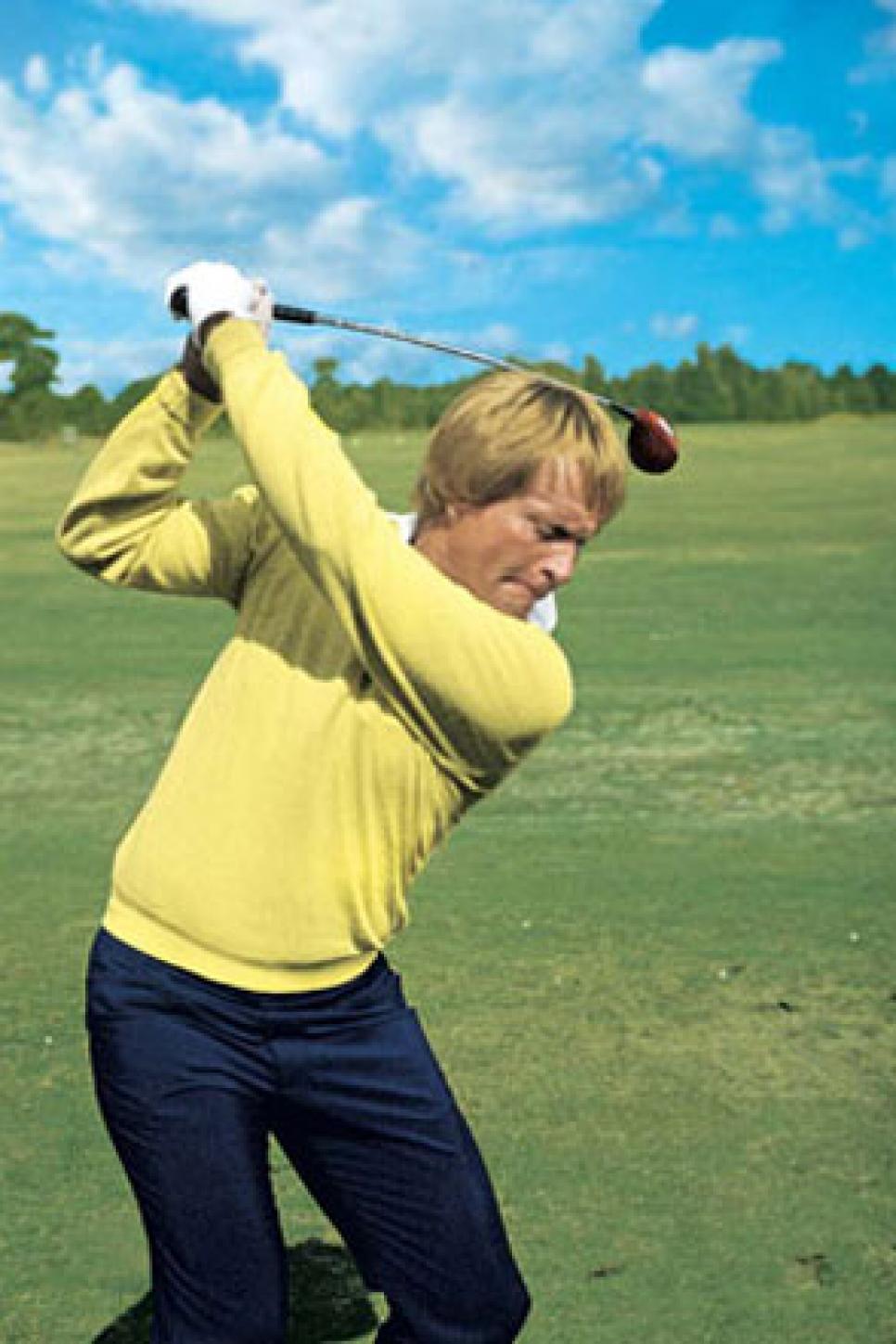Instruction
Turn Back The Clock

Stretch to the top: Swinging wide going back with a full shoulder turn will keep you powerful.
When I was younger, one of my key backswing thoughts was to extend my arms and turn my shoulders until it almost hurt. I learned to extend and turn until starting the downswing became an involuntary reflex. That set the stage for a very wide and powerful swing.
There are three reasons for swinging the club back as wide and full as possible: (1) The farther the clubhead travels in the swing arc, the more clubhead speed you can generate; (2) the fuller your backswing, the longer it takes to execute, which can help your tempo; (3) long swingers, I've noticed, usually enjoy longer-lasting careers.
JIM FLICK: Jack's absolutely right. Grooving a full shoulder turn now will add years to your golfing life. Sam Snead is a case in point, as is Tom Watson, who finished T-29 at the U.S. Open in June!
A full shoulder turn allows you to start the downswing correctly from the ground up -- left foot and knee, thigh, hips, shoulders, arms and club. When Jack and I work together, I'm continually impressed by the prowess of his golf mind. His thoughts are clear and confident, but they have evolved over time.
For example, Jack no longer insists on a one-piece takeaway. That, and trying to make a shoulder turn, can cause tension in the shoulders, which can lead to an overly inside backswing and an over-the-top downswing. Instead, think of a "swingaway" to eliminate tension in the hands and arms so they can release freely through the ball for maximum clubhead speed. Swinging the club back with the arms, and making a hip turn, actually results in a fuller shoulder turn.
NICKLAUS writes articles only for Golf Digest.
FLICK, a longtime Golf Digest Teaching Professional and PGA Golf Professional Hall of Famer, worked with hundreds of amateurs and tour players including Jack Nicklaus.